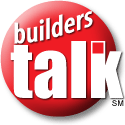 |
Messages and Online Forum Q&A
| If you find the answer to this question useful, kindly CLICK
TO PAY here. |

|
|
|
 |
|
|
Re: Drywall Corner BeadsFrom: info@builderswebsource.com
Category: Wallboard/Veneer Plaster
Remote Name: 63.198.181.43
Date: 29 Mar 2002
Time: 10:42 PM
CommentsWe recommend using a bullnose corner bead with a tape flange attached. It's a good idea to backfill with mud to provide a strong backing behind the bullnose -- otherwise it's easy to dent bullnose corners. As to the existing texture, use a putty knife or finishing sander to smooth out any built-up areas that might impair the bond of the corner bead to the wallboard. Typically a few coats of compound are required on the corner beads to feather them out properly. Once you've done this, you can retuxture to match the existing surrounds. Builders Websource.
|
|



